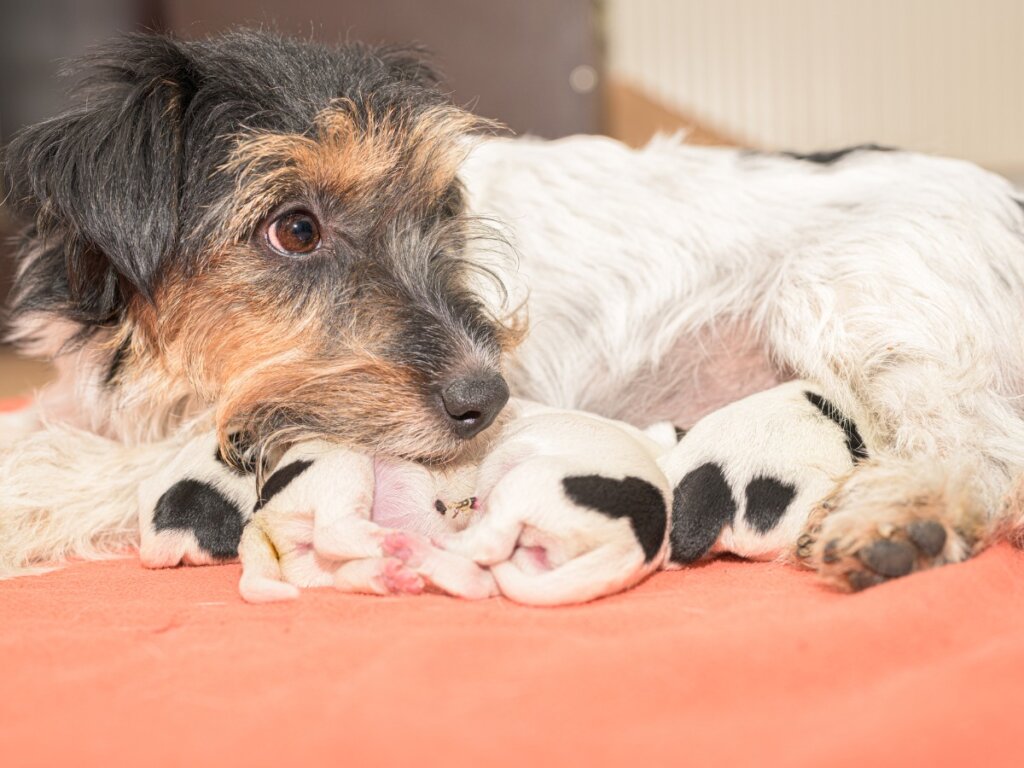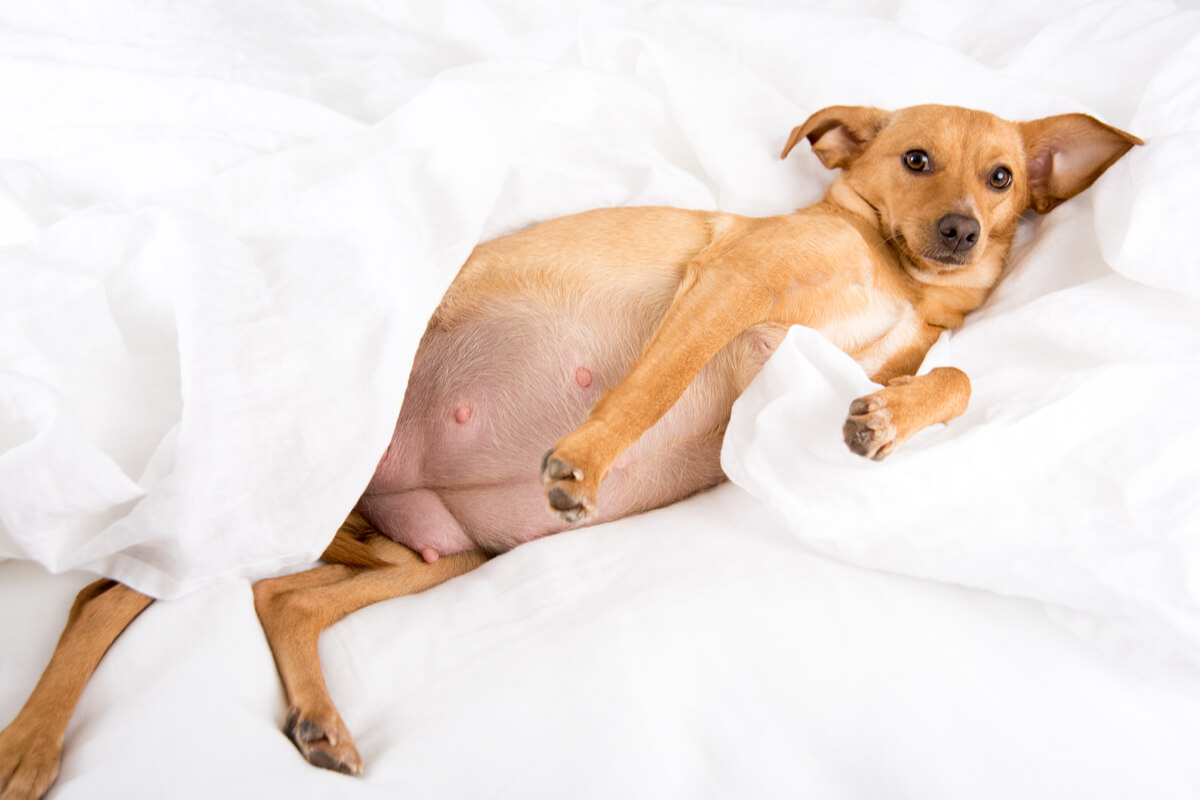Feeding a Female Dog After it Gives Birth
The correct feeding of a dog after giving birth is vital. A proper diet will ensure the well-being not only of the mother, but also of the young.

Pregnancy is one of the most delicate moments for all living beings. From complex animals like elephants and dogs to insects, all animal species have a common mission in this life: to leave their genetic imprint in the form of offspring. Therefore, feeding a female dog after it gives birth is essential to maintain her well-being and that of her puppies.
A diet rich in vitamins and macronutrients is vital for the mother and her offspring to survive after childbirth. Next, we’ll tell you how to feed a female dog who has just given birth.
How to feed a lactating dog?
Canine fetuses grow very quickly, so it isn’t surprising that the bitch gains 25% of her total weight a few weeks after intercourse, as studies indicate. During the second half of labor, weight can increase by up to 50%, a value that is often confused with excess fat due to obesity or lack of exercise.
In any case, it should be noted that many guardians overfeed the dog, with the intention of helping her during pregnancy. You mustn’t forget that the animal must exercise regularly — even if it’s gentle exercise.
Food characteristics
To know how to distinguish between pathology and normality, the Association of American Feed Control Officials (AAFCO) has established a series of standardized guidelines regarding the diet of pregnant dogs. If you follow these rules with your pet, her weight gain will be due to the growth of the puppies in the placenta.
- 22% protein in the diet: protein accounts for up to 50% of the dry weight of the tissues of living organisms. Protein intake by the mother is essential at this stage, as whole animals are being formed inside.
- 8% fat in the diet: despite its negative connotations, fats are essential for obtaining energy.
- 0.8% Phosphorus and 1% Calcium: Calcium and phosphorus are necessary for bone synthesis and metabolic development in puppies.
- More than the 50% remaining must correspond to carbohydrates: carbohydrates are the main source of energy in mammals.
In addition, other professional sources recommend giving vitamin supplements to the pregnant dog. According to studies, the consumption of folic acid in the appropriate doses can prevent cranial abnormalities in brachycephalic dog breeds, for example.

Feeding a female dog after it gives birth
As indicated by the veterinary portal VCA Hospitals, the nutritional requirements of a dog that has just given birth gradually increase, since now she must produce milk. The critical point is found 3 to 5 weeks after giving birth, since at this time, she requires 2 to 4 times more caloric intake than normal.
In order for a female dog to produce enough milk, she must have a large amount of food at her disposal. Until the fifth week after delivery, it’s necessary to strictly follow the following tips:
- Give the mother food that’s very rich in nutrients. Newborn dog food contains a large amount of vitamins and minerals.
- It is better to increase the food intake to 3 or 4 times a day, instead of increasing the amount of food divided into 2 different intakes.
- The dog should eat all the dry feed she needs during the day.
After 5 weeks, the puppies will begin to pay attention to the mother’s food and will drink less and less milk. At this point, it’s necessary to start reducing the maternal caloric intake and encourage the offspring to start eating solid foods. About 8 weeks after giving birth, the dog’s diet can return to normal.
Food for the female dog to produce more milk
In principle, it isn’t necessary to provide special food to the bitch in order for it to produce more milk. Nature is wise, and if any of the puppies are underweight, the ideal thing is to treat them individually, not through the maternal diet.
Anyway, any food rich in calories will be ideal for a nursing mother. Meats, eggs and wet foods will delight the dog in this delicate period. Above all, don’t forget that she must have a source of water available at all times.

It’s necessary to minimize risks
Feeding a female dog after it giving birth is essential for the well-being of the offspring, but don’t forget that the mother’s health is also at stake. It’s normal for the bitch not to want to eat food 24 hours after giving birth, but if the condition persists, you’ll need to go to the vet urgently.
The mother could be suffering from an infection in the placenta, breast infections and other serious conditions, such as the presence of a dead fetus inside her body. In all these cases, veterinary treatment is the only option to save the animal’s life.

